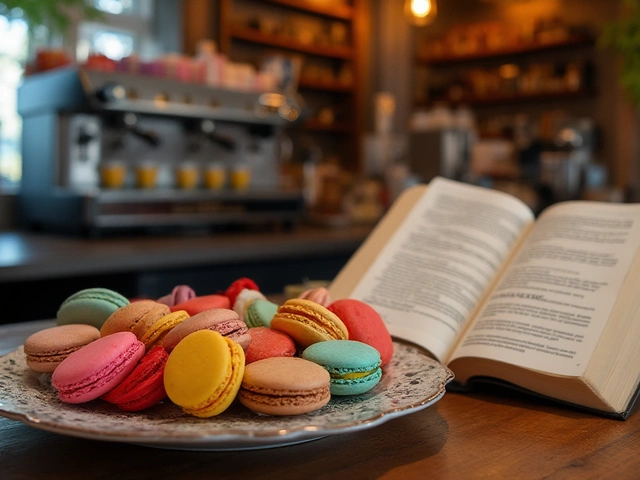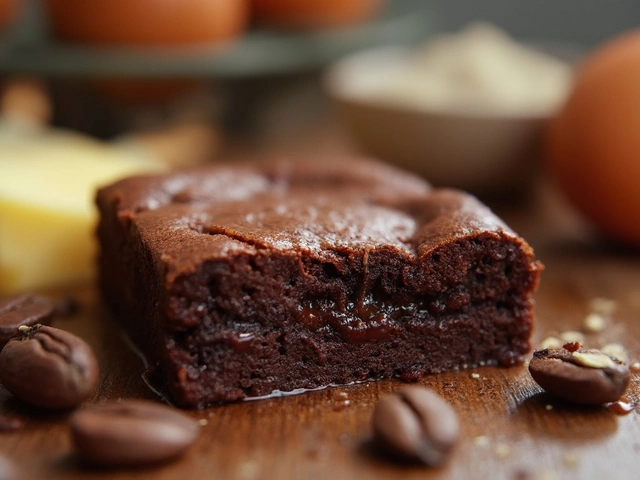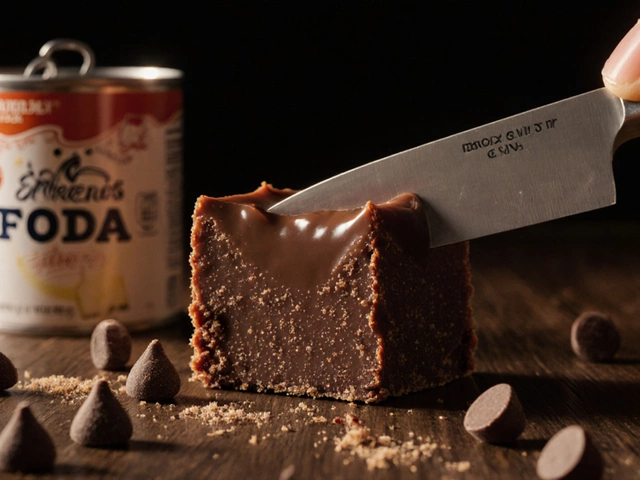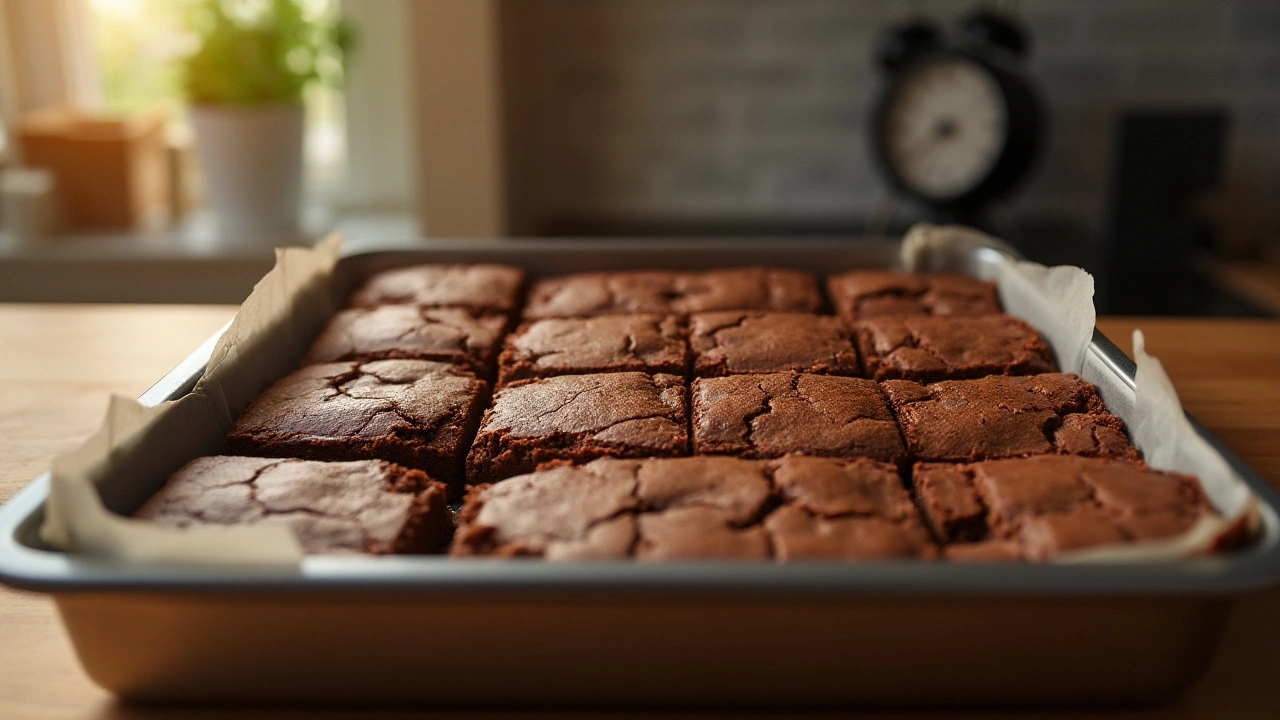
Baking a batch of brownies is not just about mixing ingredients and baking them to perfection. One key step that can make or break your brownie experience is the resting period after baking. Just when the delicious aroma fills your kitchen, it might be hard to resist diving right in. However, understanding how long to let these chocolatey treats rest is crucial to enjoying them at their best.
Resting time allows the brownies to set, ensuring they don't crumble and have the ideal texture. The gooey, chewy perfection many crave from brownies requires patience. This article will guide you through the importance of resting and how different factors can affect the length of time your brownies should rest. By following these insights and tips, you'll enjoy a delightful brownie experience every time.
- The Science of Resting Brownies
- Ideal Resting Time for Different Brownie Types
- Tips to Speed Up the Cooling Process
- Common Mistakes in Brownie Resting
- How Resting Affects Brownie Texture and Taste
The Science of Resting Brownies
The delightful art of crafting perfect brownies hinges on a variety of subtle factors, one of which is the seemingly simple resting period. Now, this might not get the spotlight as often as fancy ingredients or complicated techniques, but rest assured, it's a key player in the brownie game. To truly comprehend why these golden minutes after baking matter so much, we need to delve into a bit of food science. When brownies exit the oven, they're still engaged in a fascinating dance of temperature and chemical reactions. The residual heat continues to cook them gently, setting the structure and binding the ingredients into a cohesive whole.
One might wonder what's happening at a microscopic level during this essential phase. After baking, brownies are essentially a molten mixture of sugar, butter, and chocolate all mingling together. As they cool, these ingredients undergo crystallization, a gradual process where molecules align into a stable state, giving your brownie that firm yet tender bite. If you cut into them too soon, this process might be disrupted, leading to a crumbly or overly gooey mess. Letting them rest allows the moisture to redistribute evenly, enhancing the overall flavor and texture.
Some might think of baking as more art than science, but in truth, it's a perfect blend of both. The resting period allows not just the cooling, but also helps enhance the rich flavors as they meld into a harmonious balance. The cooling period is somewhat like letting a good wine breathe. Without this phase, even the most meticulously prepared batter will lack that elusive perfect chewiness. The sugar in brownies, often underestimated, is busy performing a host of functions. It retains moisture, promotes browning, and creates a delectable crust.
The cooling period often comes down to patience, a quality frequently tested by the irresistible aroma wafting from the kitchen. Studies, like those from the Culinary Institute of America, reveal that letting baked goods rest can significantly impact their final taste and texture. As brownies cool from the perimeter inwards, this resting time ensures an even texture. Even a simple household experiment, say, cutting brownies at different intervals, can vividly demonstrate how resting contributes to achieving that ideal consistency and taste balance.
"Good brownies don't just taste good, they feel good. It's all about letting the chemistry within develop its story on your palate." - Chef Ellen Fields, pastry expert.
Resting doesn't just make brownies easier to slice perfectly for serving; it ensures each bite provides a uniform taste experience. The cooling process allows volatile compounds to settle, emphasizing the deep, rich flavors of the chocolate. It's often tempting to dive in with a spoon straight out of the oven. After all, brownies are typically baked for 20 to 30 minutes at a temperature of around 350°F (175°C). But by waiting a little longer post-bake—preferably an hour or more—the texture develops into what brownie lovers hail as perfect. That consistent softness across the pan speaks to the power of patience in the kitchen.
Ideal Resting Time for Different Brownie Types
When it comes to crafting the perfect batch of brownies, understanding how long each type should rest is an art in itself. Different textures require varying amounts of patience. Whether you're a fan of classic fudge brownies, cake-like ones, or something in between, giving your brownies the proper time to rest can make a world of difference. These variations demand unique resting periods to bring out their best flavors and textures.
Classic fudge brownies, known for their rich and dense texture, usually benefit from a longer resting period. Allowing them to sit for a minimum of two hours is often recommended. This resting phase helps the flavors meld together, while also giving the brownies ample time to firm up, which makes slicing much easier. If you have the extra time, letting them rest overnight can enhance their taste even more.
For those who prefer the lighter, airy texture of a cake-like brownie, a shorter resting time will often suffice. These brownies can be enjoyed after just an hour of cooling. This shorter period allows them to maintain their moisture, while cooling enough to prevent crumbling during slicing. The delicate balance between crisp edges and a soft center is perfected with the right amount of patience.
Lindsey Shere, a legendary pastry chef, once noted, "Patience in baking is no different than patience needed in life; both reward you in the end." Resting time for baked goods can truly transform the experience.
If you're baking brownies with add-ins like nuts, chocolate chips, or caramel swirls, the mix-ins can impact how long they should rest. These extras may still be gooey while the rest of the brownie sets. Consider extending the resting period by about thirty minutes to ensure a consistent texture throughout each slice.
When refrigeration enters the picture, it's another story. Refrigerating your brownies accelerates the setting process. A refrigerator can cut down the resting time by up to half. In roughly one hour, refrigerated brownies can be ready to serve, especially helpful if you're in a time crunch or need to free up kitchen space quickly.
Remember, the shape of your brownie also influences its resting needs. Individual brownie bites and muffins cool more quickly than a full-sized pan. If you're opting for individual servings, test them after a brief thirty-minute rest to see if they have firmed adequately.
Understanding these timeframes helps you choose the best approach for your chosen brownie style. So next time you're planning to bake, you'll know precisely when the treat is at its most divine stage. Remember, the wait is part of the magic, turning ordinary ingredients into something extraordinary.

Tips to Speed Up the Cooling Process
The heavenly scent of freshly baked brownies is enough to test the patience of even the most disciplined baker. While the wait during the resting period ensures a perfect bite, sometimes you just want to enjoy them sooner. Luckily, there are methods to hasten the cooling process without compromising your brownie’s delightful texture.
One effective way to speed up the cooling is by placing the baking pan on a wire rack. The elevated position allows air to circulate beneath the pan, dissipating heat more quickly than if it were left on the countertop. This simple change can make a notable difference. You might be surprised to know that a wire rack can cool your brownies up to 30% faster, thanks to the even distribution of air around the pan.
Alternatively, you might consider using the refrigerator for assistance. Once removed from the oven, let the brownies sit at room temperature for a few minutes to release initial steam and stabilize. Then, transfer them to the fridge for a short period. Keep in mind that chilling them too quickly can cause the top to sweat and potentially alter texture, so balance is key. This technique is particularly useful for dense or fudgy brownies that might take longer to cool naturally. Consider setting a timer to avoid over-chilling, which can dry out the edges unnecessarily.
Quick Cooling Tricks
If you're in a hurry, slicing the brownies into serving pieces right after taking them out of the oven can significantly shorten the cooling time. This increases the surface area coming into contact with air, thus cooling them down swiftly. Make sure to use a plastic or silicon knife to avoid damaging your pan if it's not scratch-resistant. Don’t forget: slicing while warm requires a steady hand and a light touch to avoid crumbling.
"Let the air do the work for you. A little patience is still required, but these methods can help when you're short on time," says Chloe Yang, a renowned pastry chef whose tips have saved countless impatient bakers.
Avoid using the freezer unless absolutely necessary, as the drastic change in temperature can result in uneven cooling, negatively impacting texture. However, if you must, wrap the brownie pan and allow it to sit in the freezer for no more than ten minutes. Finally, remember to uncover any brownies in cold storage to prevent condensation from forming on the surface, which can make them sticky and less appealing.
These methods provide great shortcuts, but always keep in mind that some recipes naturally require a bit more time to rest. By experimenting with these tips and trusting your intuition, you'll find the sweet spot that delivers perfect brownies with a little less waiting.
Common Mistakes in Brownie Resting
Waiting for brownies to cool down and set might seem simple, but there are several common mistakes that bakers make during this critical stage. The aroma of freshly baked brownies is enthralling, and many fall victim to impatience. Cutting into them too soon is one such mistake. Even though the outside appears set, the inside might still be too soft, leading to a mushy mess. Another oversight is not setting the brownies on a level, heat-resistant surface. Whether it's a wire rack or a kitchen counter, ensuring that heat can escape evenly from underneath prevents condensation buildup, which could make your brownies soggy.
Ignoring environmental influences, like kitchen temperature, can also trip up enthusiastic dessert makers. On particularly warm days, leaving brownies out at room temperature might mean they take longer to firm up than expected. It's crucial to pay attention to the humidity and room temperature, adjusting the resting approach accordingly. A
world-renowned baker once said, "The art of perfect brownie texture is part science, part patience" guiding many to rethink how they let their brownies rest. Understanding that each batch might need a unique approach is key to avoiding these resting mishaps.
A misstep often seen is covering brownies with tin foil or plastic wrap immediately after baking. While it might seem like a way to keep them fresh, it does the opposite by trapping steam, which impacts the desired texture. Allowing your brownies to breathe while they cool prevents this error. Additionally, choosing the wrong time frame for resting might affect your dessert's ultimate success. Leaving brownies in the baking pan can prolong the cooling process since the metal retains heat. If you want to cut down on cooling time, carefully remove brownies from the pan and allow them to rest on a wire rack.
It's interesting to note that some recipes benefit from longer resting times, even up to overnight, especially those with dense, fudgy textures. Brownies refrigerated for a while after cooling can sometimes provide a deeper flavor and sturdier texture. So, when planning for the perfect baking experience, consider what resting time frames deliver the desired result. Experiments in resting durations lead to splendid brownie textures, whether you're aiming for chewy or light. Understanding these common errors reminds us that a little patience can transform your brownies into the delightful treat they were intended to be.
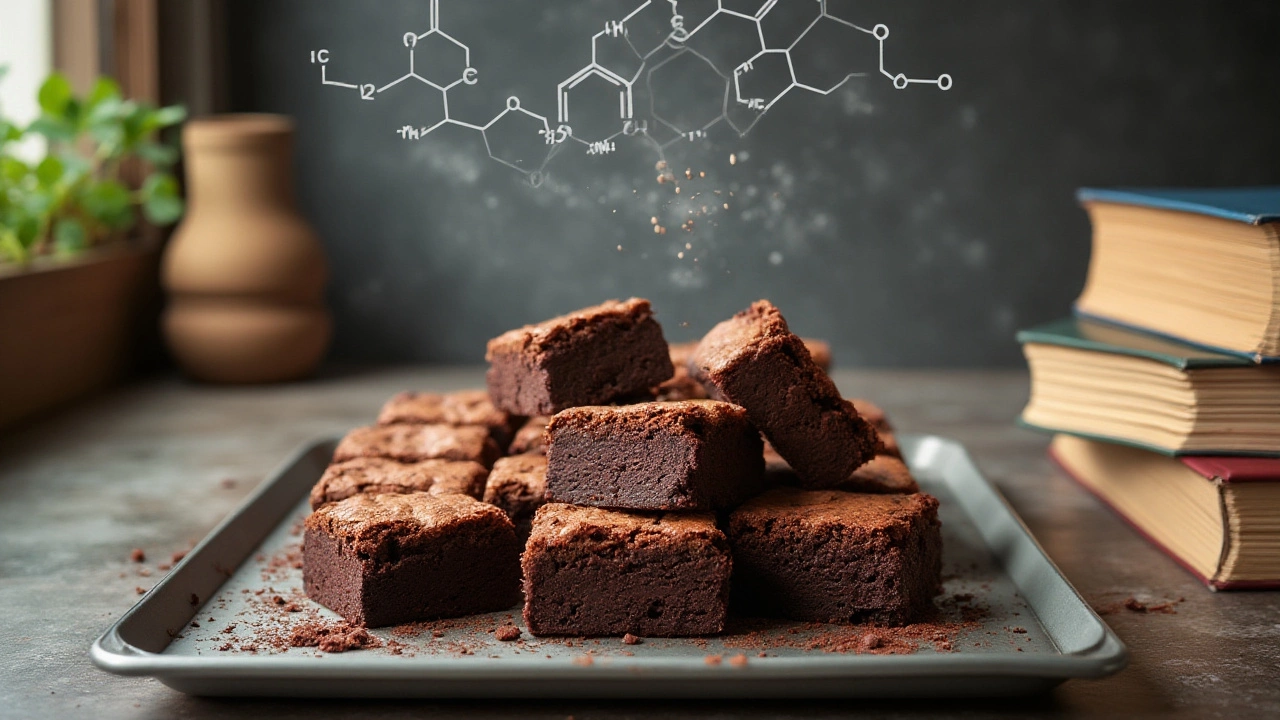
How Resting Affects Brownie Texture and Taste
When your freshly baked batch of brownies emerges from the oven, it's easy to get impatient. The inviting aroma fills the air, tempting you to dive right in. But, taking a breath and allowing them to rest can transform your brownies from good to legendary. Resting is about more than simply cooling; it's a critical step that helps develop the distinct texture and deepens the flavors you desire. As your brownies rest, the steam generated during baking redistributes, allowing the moistness to settle evenly throughout the interior while the crust slowly gets firmer. And it's not just about texture; allowing brownies to rest augments their taste as flavors continue infusing harmoniously. The chocolatey goodness becomes richer and more pronounced as its components meld, allowing your taste buds to experience each subtle nuance.
Delving deeper, resting also gives the chocolate a chance to set properly, enhancing both the texture and taste. As the brownies cool at room temperature, the structure stabilizes, preventing them from turning crumbly when cut. The patience you exhibit by letting brownies rest eventually pays off in the texture, making each bite satisfyingly chewy or fudgy, depending on your recipe. Cutting them too soon likely results in a gooey mess rather than the defined squares ready to plate. Elevating this moment from casual nibbling to a delightful dining experience is incredible.
Renowned food scientist Harold McGee has pointed out the importance of resting baked goods by saying,
"Many flavors strengthen over time as the cooler temperature slows flavor-release rates, letting our senses appreciate the undertones more thoroughly."His insight highlights how a simple action of waiting can significantly impact perception and enjoyment. These subtle nuances in taste are a result of the cooled ingredients continuing their interactions even after leaving the oven's environment. Also, people often wonder if different recipes require distinct resting periods. It may amaze you, but altering the chocolate-to-butter ratio significantly influences this resting need. Fudgy recipes, for instance, comprising higher butter content, benefit from a protracted resting period to firm up completely. Conversely, brownie recipes intending for a cakier texture generally settle in a comparatively short time literally unlocking a world of delightful experimentation for aspiring bakers.
| Brownie Type | Recommended Resting Time |
|---|---|
| Fudgy Brownies | 2-3 hours |
| Cakey Brownies | 1-2 hours |



